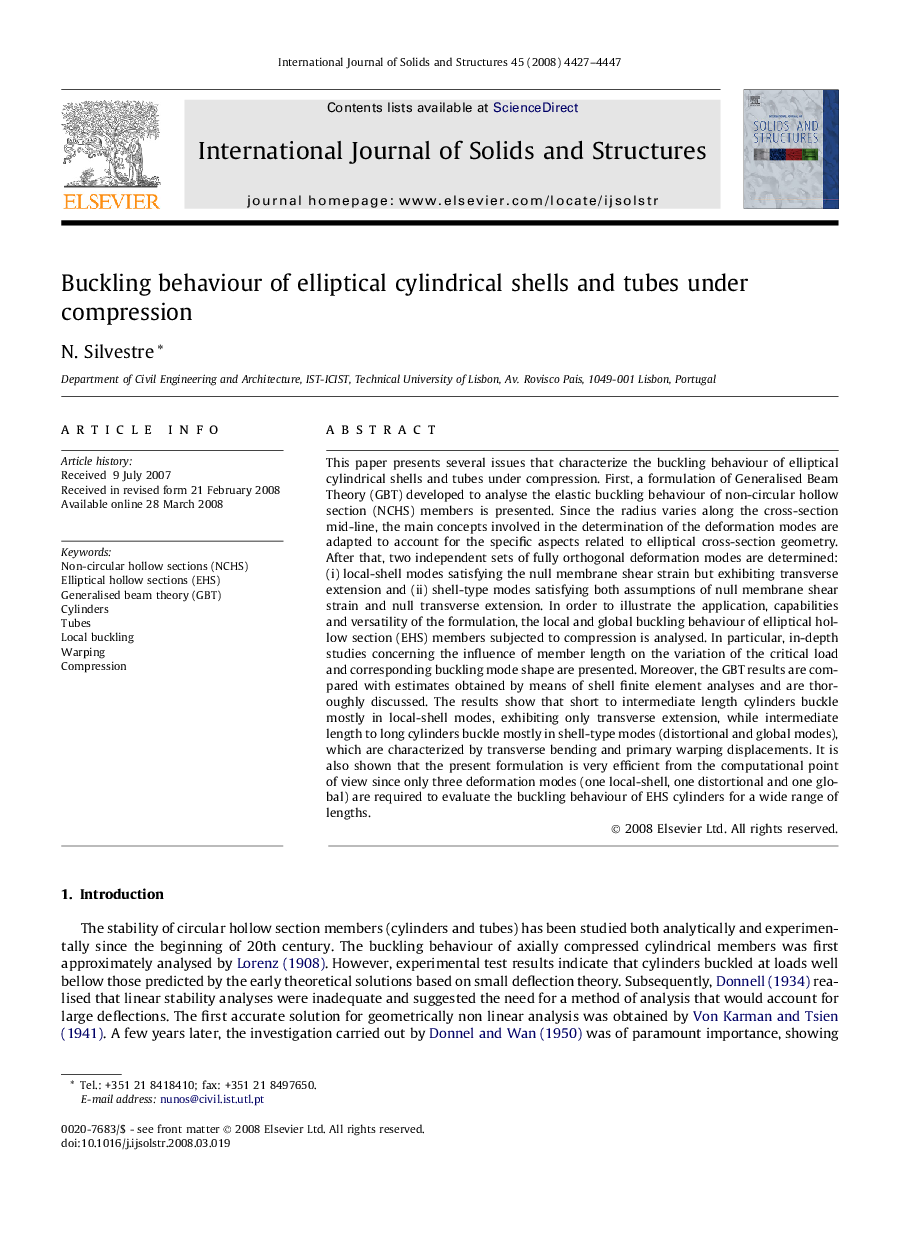| Article ID | Journal | Published Year | Pages | File Type |
|---|---|---|---|---|
| 279580 | International Journal of Solids and Structures | 2008 | 21 Pages |
This paper presents several issues that characterize the buckling behaviour of elliptical cylindrical shells and tubes under compression. First, a formulation of Generalised Beam Theory (GBT) developed to analyse the elastic buckling behaviour of non-circular hollow section (NCHS) members is presented. Since the radius varies along the cross-section mid-line, the main concepts involved in the determination of the deformation modes are adapted to account for the specific aspects related to elliptical cross-section geometry. After that, two independent sets of fully orthogonal deformation modes are determined: (i) local-shell modes satisfying the null membrane shear strain but exhibiting transverse extension and (ii) shell-type modes satisfying both assumptions of null membrane shear strain and null transverse extension. In order to illustrate the application, capabilities and versatility of the formulation, the local and global buckling behaviour of elliptical hollow section (EHS) members subjected to compression is analysed. In particular, in-depth studies concerning the influence of member length on the variation of the critical load and corresponding buckling mode shape are presented. Moreover, the GBT results are compared with estimates obtained by means of shell finite element analyses and are thoroughly discussed. The results show that short to intermediate length cylinders buckle mostly in local-shell modes, exhibiting only transverse extension, while intermediate length to long cylinders buckle mostly in shell-type modes (distortional and global modes), which are characterized by transverse bending and primary warping displacements. It is also shown that the present formulation is very efficient from the computational point of view since only three deformation modes (one local-shell, one distortional and one global) are required to evaluate the buckling behaviour of EHS cylinders for a wide range of lengths.
